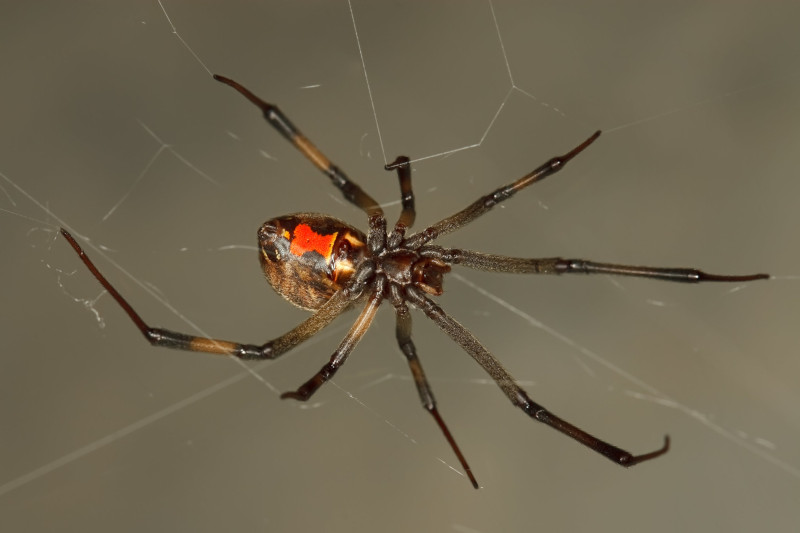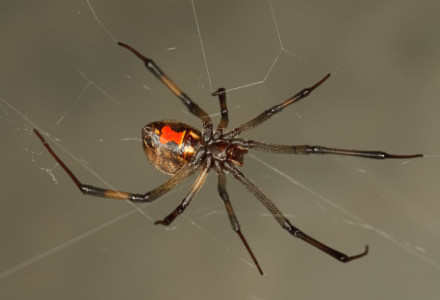
Brown Widow Spider Facts
- The term of Brown Widow Spider serves as only one of many common names for this lesser-known cousin of the dreaded Black Widow. Some of the others, though, include such terms as the grey widow, brown button spider, and brown black widow.
- The scientific name, however, for this remarkable arachnid remains that of the tongue-twisting Latrodectus geometricus. By either of these many names, though, it remains a significantly less dangerous species than its much better known relative.
- The first official recognition of this fascinating spider as a separate and distinct species occurred in the year 1841. This impressive work also took place as the result of the efforts of the well respected German entomologist, Carl Ludwing Koch.
- Due to a combination of its territorial range and numbers, it appears to be maintaining a stable population base. The IUCN, therefore, currently has no listing for the creature. Such a listing would appear on the organization’s Red List.
- The amazing Brown Widow Spider, should, however, still be considered to facing various risks. These further include such dangers as habitat loss across its range. Its greatest threat, though, likely comes in the form of ongoing climate change.
Related Articles
Brown Widow Spider Physical Description
Not surprisingly, given the similarity in names, as well as the genetic relationship, the Brown Widow Spider bears a resemblance to the Black Widow. Various physical differences quite obviously do exist, however, between the two species of arachnid.
Among these differences remains the simple fact that in this species, the degree of sexual dimorphism remains far more pronounced. That characteristic manifests itself in the fact that females attain a significantly larger size than do the males of the species.
More precisely, the smaller male attains an average body length of no more than 0.08 – 0.16 in (2 – 4 mm). The larger female, meanwhile averages reaching a body length of between 0.28 – 0.4 in (7 -1 0 mm). In both genders, the legs develop as highly elongated.
In coloring, the male Brown Widow Spider also tends to be more consistent in coloring. His body typically displays various shades of brown. The female, though, varies sharply among individuals, including shades of gray, white, light and dark brown, and nearly black.
The legs of the female also generally develop a dense covering of fine white hairs. The smaller, drabber male, though, does not possess this trait. Females of this remarkable species also display the same hourglass shape on their abdomens as their cousins.
- Kingdom: Animalia
- Phylum: Arthropoda
- Class: Arachnida
- Order: Araneae
- Family: Theridiidae
- Genus: Latrodectus
- Species: L. geometricus
Brown Widow Spider Distribution, Habitat, and Ecology
The amazing Brown Widow Spider actually inhabits an extremely broad swathe of the world. In point of fact, the arthropod currently inhabits a truly cosmopolitan area. Evidence indicates, though, that this occurs due to an artificial expansion via the actions of man.
Unfortunately, this has rendered it almost impossible to determine the area of the world in which it originally evolved. Nevertheless, recent evidence seems to indicate that this marvelous arthropod originally appeared in the area what’s now South Africa, in Africa.
In the wild, this invertebrate inhabits nearly all temperate and tropical environments. It has also completely adapted to inhabiting areas in and around human structures. These include the outsides of garages, picnic tables, along fences, and even piles of debris.
Like other spiders, the Brown Widow Spider evolved as a pure carnivore. It feeds on a wide variety of small insects, consuming virtually anything small enough to become trapped in its web. This it constructs with a random, often haphazard structure, like some species.
After mating, the female lays between 120 – 150 eggs in a sac. This structure has a distinct shape, being covered with numerous spiny projections. All specimens of this arthropod possess venom, yet this remains much less dangerous to humans the the Black Widow.
Species Sharing Its Range
Check out our other articles on Sensational Christmas Namesakes of the World, Pesquet’s Parrot, Mount Erebus, Purple Pitcher Plant, Sangai, Velvet Belly lanternshark, Wood Frog

